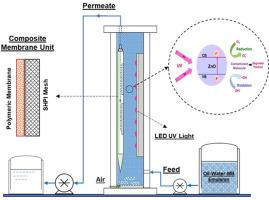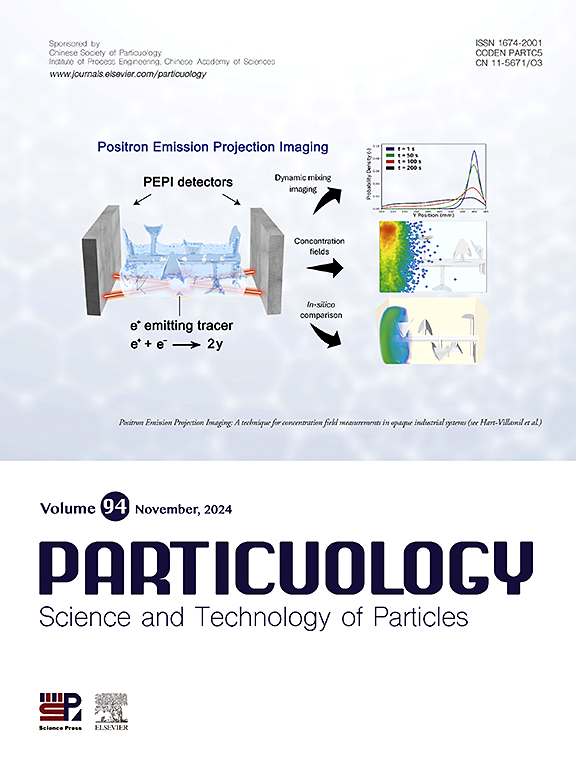Treatment of oily wastewater using submerged photocatalytic membrane reactor
Abstract
The increase in oily contaminated wastewater emissions has made it essential to develop efficient treatment approaches to mitigate its negative impact on the ecosystem and human health. In this research, a suspended catalyst photocatalytic membrane reactor (SPMR) is developed for simultaneous oil-water separation as well as pollutants degradation using ZnO as a photocatalyst and a submerged LED-UV light. A composite membrane unit was used in the reactor that was made of a polymeric layer and a superhydrophilic (SHPI) underwater oleophobic layer. The later was prepared by attaching ZnO nanoparticles (NP) on stainless steel mesh using the spraying method. The pure water flux of the composite membrane was comparable to that of the pristine polymeric membrane indicating minor resistance of the SHPI layer. For oil-water emulsion, water flux ∼1332 L m−2 h−1 was achieved at 20 kPa transmembrane pressure (TMP) with ∼99% oil separation efficiency. Using methylene blue dye (MB) decolourizations to assess simultaneous oil-water separation and pollutant degradation efficiencies, close to 86% dye decolourization and near complete oil water separation was achieved. The results suggest a promising potential of the proposed design for treatment of contaminated oily wastewater.


 求助内容:
求助内容: 应助结果提醒方式:
应助结果提醒方式:


